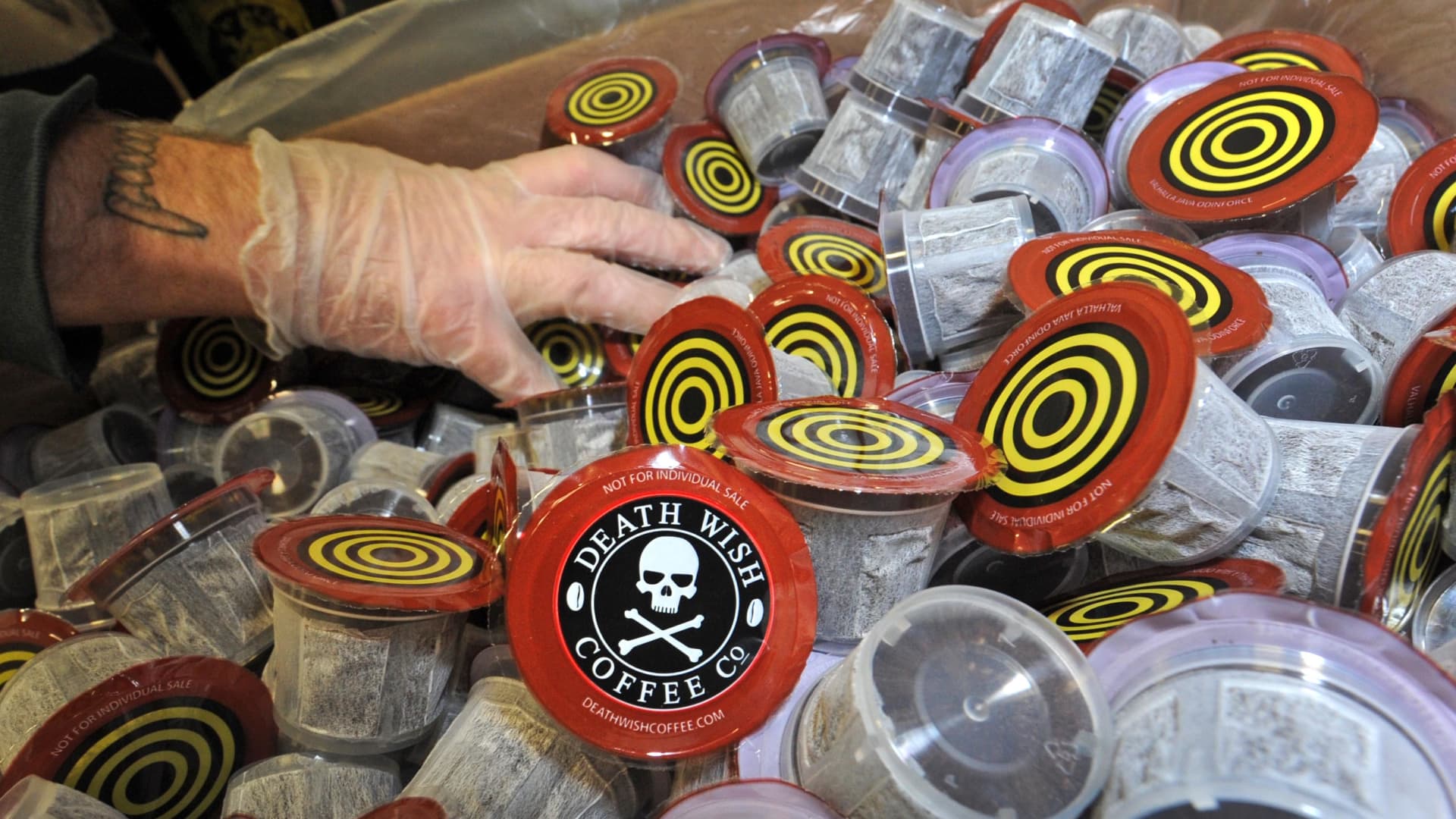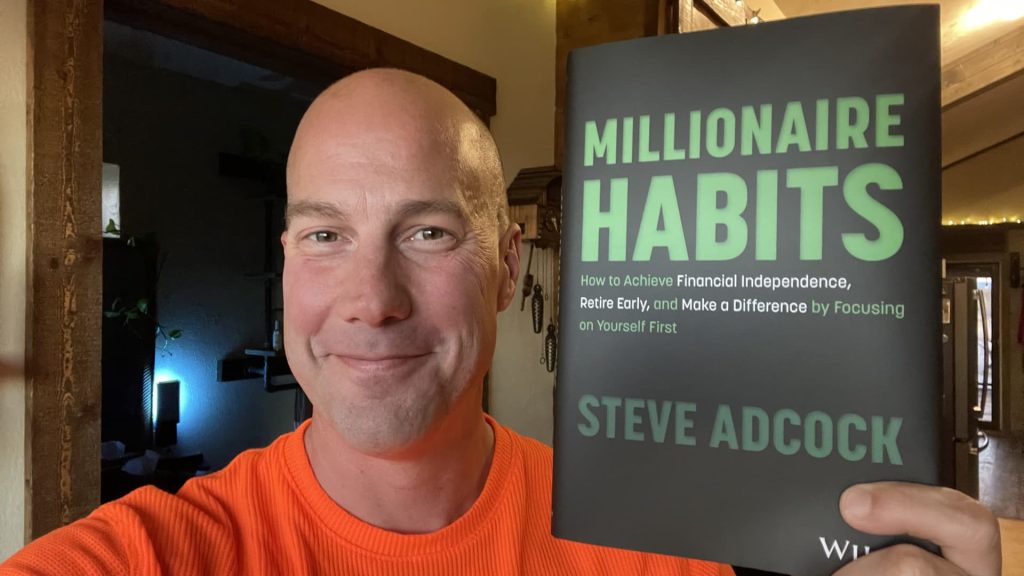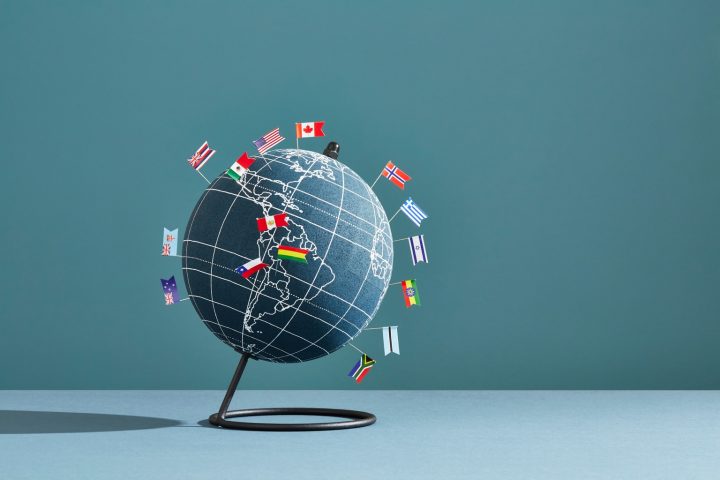The success of single-brew home coffee systems like Nespresso and Keurig have improved the ease of at-home caffeine consumption, but sustainability is a significant problem.
Companies like Keurig Dr. Pepper and Nestle-owned Nespresso are working on ways for consumers who get their daily cup of Joe through an at-home single-brew machine to lessen the waste that results from the pod approach. Plant- and paper-based pods that can be composted are coming to more markets.
These efforts are especially important because Americans are heavy coffee drinkers, with more American adults drinking coffee each day than any other beverage — including tap or bottled water, according to the National Coffee Association’s latest National Coffee Data Trends report. Single-cup brewers are the second most popular at-home preparation method, behind traditional drip coffee makers, and there has been a 45% increase in Americans’ single-cup brewer ownership since 2017, according to the National Coffee Association.
Keurig coffee sales in the U.S. reached over $4 billion last year, while Wall Street analysis pegs Nespresso sales at roughly $1.5 billion. The U.S. coffee pods and capsules market is expected to grow to $10.1 billion by 2028 up from $8.4 billion last year, according to market research firm Mordor Intelligence.
Environmentally friendly, biodegradable, and compostable coffee pods are increasingly in demand, and have been on the market for a few years, such as NEXE, a packaging solutions supplier based in Canada, which launched a line of compostable coffee pods in the U.S. and Canada in 2021, which it markets as Nespresso-compatible.
Still challenges persist, including a disparate recycling system in the U.S., where only 73% of households have access to recycling and only 21% of household recyclables are captured, according to The Recycling Partnership’s 2024 State of Recycling Report. There are also strained supply chains to contend with as well as lengthy lags between product idea generation and time to market. Getting customer buy-in for new products is also a challenge for companies looking to produce more sustainable coffee pods.
“I think these companies are trying to find something that if they don’t end up getting recycled — which a lot of them don’t unfortunately — what happens then,” said Dillon Baxter, founder and chief executive of PlantSwitch, a material-science company that makes plant-based alternatives for coffee pod manufacturers. “It takes time and it’s something that is typically an additional cost and so it can impact their bottom line. It’s not as easy as some people might think to transition.”
Here’s a look at what Keurig and Nespresso — the two largest makers of at-home coffee pod systems — have planned for at-home coffee drinkers as part of that push to keep the pods from filling up the garbage.
Keurig Dr Pepper’s new plastic-free pod is coming
Keurig Dr. Pepper announced in March that it would be introducing K-Rounds pods, which are plastic-free. The new pods will be wrapped in a plant-based coating, eliminating the need to recycle, which has been a challenge for the company as it tries to move toward greater sustainability.
“Where recycling happens, it’s a great solution,” but since it’s not uniform, it doesn’t completely solve the problem, said Monique Oxender, the company’s chief corporate affairs officer who oversees sustainability initiatives.
The move to eliminate plastic in its pods has been about five years in the making, Oxender said. And, though beta testing is slated to begin in the fall, there’s no time frame for the plastic-free pods to become broadly available. “We feel confident that this is the future of the Keurig system, we just want to make sure, before we take it to scale, we have it right,” Oxender said.
To use the new plastic-free pods, consumers will have to buy a new brewer, but they’ll still have the option to brew existing K-Cup pods for a broader variety of flavors. The company expects its new pods will be certified compostable and is working through the certification process.
For Keurig, the process toward sustainability is ongoing. At the end of 2020, the K-Cup pods transitioned from No. 7 plastic to recyclable polypropylene, which is also known as No. 5 plastic in order to boost recyclability options. Yet it wasn’t the whole solution. Although No. plastic is considered widely accepted in curbside recycling systems across North America, many communities do not yet accept certain polypropylene containers, including coffee pods, for recycling. The company is working with individual communities and recyclers so more consumers can recycle their pods in local communities, but it takes time, Oxender said.
Keurig is also focused on decreasing its overall plastic footprint as well as incorporating recycled plastic in select brewers. And, later this year, Keurig will offer a mail-back recycling program for K-Cup pods via Keurig.com as an option for those consumers who cannot currently recycle these pods in their community.
Nespresso’s paper-based compostable pod in Europe
For its part, Nespresso offers two different lines of machines that use aluminum capsules, which are readily recyclable. “It’s really unlike any other material today to protect the flavor and taste of coffee,” said Jessica Padula, Nespresso’s U.S. head of sustainability.
Padula says the company has been using aluminum for more than three decades because it preserves the coffee taste well and because not all plastics are recyclable. Nespresso consumers can recycle their capsules through pre-paid shipping labels at some 88,000 UPS drop-off locations across the U.S.
Making it easy for consumers to return the pods to the company is the right way to go, says Tom Szaky, chief executive of TerraCycle, a private U.S.-based recycling business which includes coffee capsule recycling. “When companies invest money to make the effort easy and accessible to consumers through mail-in programs, local store drop-off, or curbside pickup, it raises the likelihood that consumers will recycle,” he said.
Curbside picked is the most efficient method, according to Szaky, and in New York City, Nespresso has partnered with the city’s recycling contractor to create special equipment so consumers can recycle the capsules directly from their at-home bin. Nespresso extended the curbside program to Jersey City, New Jersey, starting this month, Padula said.
“If it’s not curbside recyclable or cannot be designed to be curbside recyclable, it’s about making a meaningful investment so that it’s something that’s convenient and accessible for consumers,” said Szaky, whose company does work for both Keurig and Nespresso.
Currently, just 43% of households participate in recycling; of those that have access, 59% use their recycling service; and of those that do, only 57% of recyclable material is put in recycling containers, according to The Recycling Partnership, which says an effective system would be at 90%.
Nespresso numbers are even lower: Approximately 36% of U.S.-based Nespresso drinkers recycle their capsules, according to a company spokesperson.
The recycling issues help explain why Nespresso is also actively looking at other sustainable options for its pods. The company piloted compostable paper capsules in France as well as in Switzerland, where its coffee is produced. They are home compostable, which has been very well-received, Padula said.
The company faces challenges, however, when it comes to recreating this momentum in the U.S. It takes considerable time to ship the coffee from Switzerland to the U.S. and aluminum preserves it better for longer, Padula said. The company would like to be able to offer other, sustainable options to customers, but not at the expense of taste, she said. “We are actively looking to bring a paper option to the U.S., but it has to preserve the coffee quality and taste.”
Read the full article here






